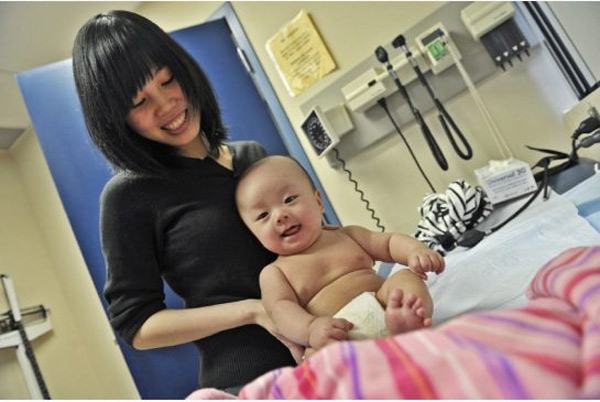
As a result, many babies born to immigrant mothers, especially those from South and East Asia, may be incorrectly labelled small for their gestational age or large for their gestational age, according to research published today in the Canadian Medical Association Journal.
Those designations can trigger medical interventions, such as heightened monitoring and follow-up care for small babies, which may not be necessary, said Dr. Marcelo Urquia, an epidemiologist at the Centre for Research on Inner City Health of St. Michael’s Hospital and an adjunct scientist at the Institute for Clinical Evaluative Sciences. Or, they may miss large babies associated with complicated deliveries.
Dr. Urquia and colleagues have developed a series of birthweight curves for specific regions of the world–graphs used to plot how one newborn’s weight compares to others. A baby whose birthweight is in the lowest tenth percentile of the curve is deemed to be “small for gestational age.” One whose birthweight is in the highest tenth percentile is deemed to be “large for gestational age.”
Dr. Urquia looked at 1,089,647 single births in Ontario between 2002 and 2012. About one-third of those babies (328,387) were born to immigrant mothers, of whom more than half (53.6 per cent) were of East and South Asian origin.
About 10 per cent (33,780) of infants born to immigrant mothers were classified as small for gestational age on both the Canadian and regional scales. These babies were more likely to die or suffer adverse events than heavier infants, Dr. Urquia said.
About 6 per cent of additional infants born to immigrant mothers were classified as small for gestational age on the Canadian curve but not on the birthweight curve for the mother’s country of origin.
Compared to newborns of Canadian-born mothers, newborns of immigrant mothers classified as small for gestational age on the Canadian curve had lower odds of adverse events such as a lengthy hospital stay or death. But babies classified as small on the world-region specific curves were more likely to die or suffer adverse events.
Approximately 5.4 per cent of babies to immigrant mothers were deemed large for gestational age when using both curves and about 4.3 per cent were classified as large when using only the world-region specific curves. These deliveries of babies missed by the Canadian curve also exhibited complications associated with large babies, such as perineal tears in the mother, shoulder dystocia (when the baby’s shoulder gets stuck behind the mother’s public bone, preventing easy delivery) and postpartum hemorrhage.
“World region-specific curves seem more appropriate than a single Canadian curve for assessing the impact of small for gestational age and large for gestational age on adverse neonatal and obstetrical outcomes among some immigrant groups, particularly those whose birth weight distributions differ markedly from that of the local population, such as East and South Asian immigrants,” Dr. Urquia wrote.
“Estimating the number of newborns conceivably spared unnecessary prolonged stay in hospital, special care, or referral for specialized pediatric or nutritional interventions and the cost savings therein, is a worthwhile step in evaluating the impact of adopting world region-specific curves among certain immigrant populations.”